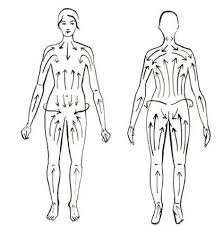Bathing Suits & Brushes
You’re probably asking yourself where I’m going with this … bathing suits and brushes? What the heck do they have to do with each other? Keep reading … you’ll thank me once you see that glowing skin of yours :)
So, dry brushing isn’t anything new. But it is something that most of us don’t do or even know that much about. Dry brushing is a technique that involves using a dry, stiff-bristled brush to exfoliate the skin. And the reasons to do it every day are super beneficial.
Here’s a link to the one I use. (I am not affiliated with this link and do not make any money if you purchase it.)
Why should you dry brush?
Dry brushing is a simple and inexpensive way to improve the health and appearance of your skin, and it may have additional health benefits as well.
Exfoliation: Dry brushing removes dead skin cells from the surface of the skin, leaving it looking smoother and more radiant.
Improved circulation: Brushing the skin stimulates the lymphatic system and improves blood flow, which can help to reduce inflammation and promote healing.
Detoxification: By stimulating the lymphatic system, dry brushing can help to remove toxins from the body and reduce the workload on the liver and kidneys.
Reduced appearance of cellulite: While there is limited scientific evidence to support this claim, some people report that dry brushing can help to reduce the appearance of cellulite by breaking up fatty deposits and smoothing out the skin.
Stress relief: Dry brushing can be a relaxing and meditative practice, which can help to reduce stress and promote a sense of well-being.
Techniques & Tips
Tip: You may want to dry brush in the shower, before you shower, so that you can easily clean the area once you’re done.
To dry brush, use a natural fiber brush as mentioned earlier. Follow the direction pictured above fro each area of the body. When you first start dry brushing, it’s best to begin with light brushing. As you get used to it, you can increase the pressure.
Start with dry skin before showering or bathing.
Begin at your feet and brush upward towards your heart in long, sweeping or circular, clockwise motions. Use gentle pressure and avoid brushing too hard, especially on sensitive areas.
Brush each area of your body several times, including your legs, arms, back, stomach, and chest.
Use light pressure in areas where your skin is thin and harder pressure on thicker skin, like the soles of your feet.
Avoid brushing areas with broken skin, rashes, or other skin conditions.
Brush your arms after you have brushed your feet, legs, and mid-section. You should brush upward towards your armpits.
After dry brushing, take a cool shower to help remove the dry skin.
After your shower, pat your skin dry with a towel and apply moisturizer to hydrate your skin.
Remember to clean your dry brush regularly with soap and water, and let it air dry completely before using it again. Dry brushing can be done 1-2 times a week, depending on your skin's sensitivity
Also, never brush an area affected by poison oak, poison ivy, or psoriasis. Don’t dry brush your face unless you’re using a softer brush made for that purpose.
So, add dry brushing to your bathing routine and let’s get ready for bathing suit weather!
Happy brushing!



